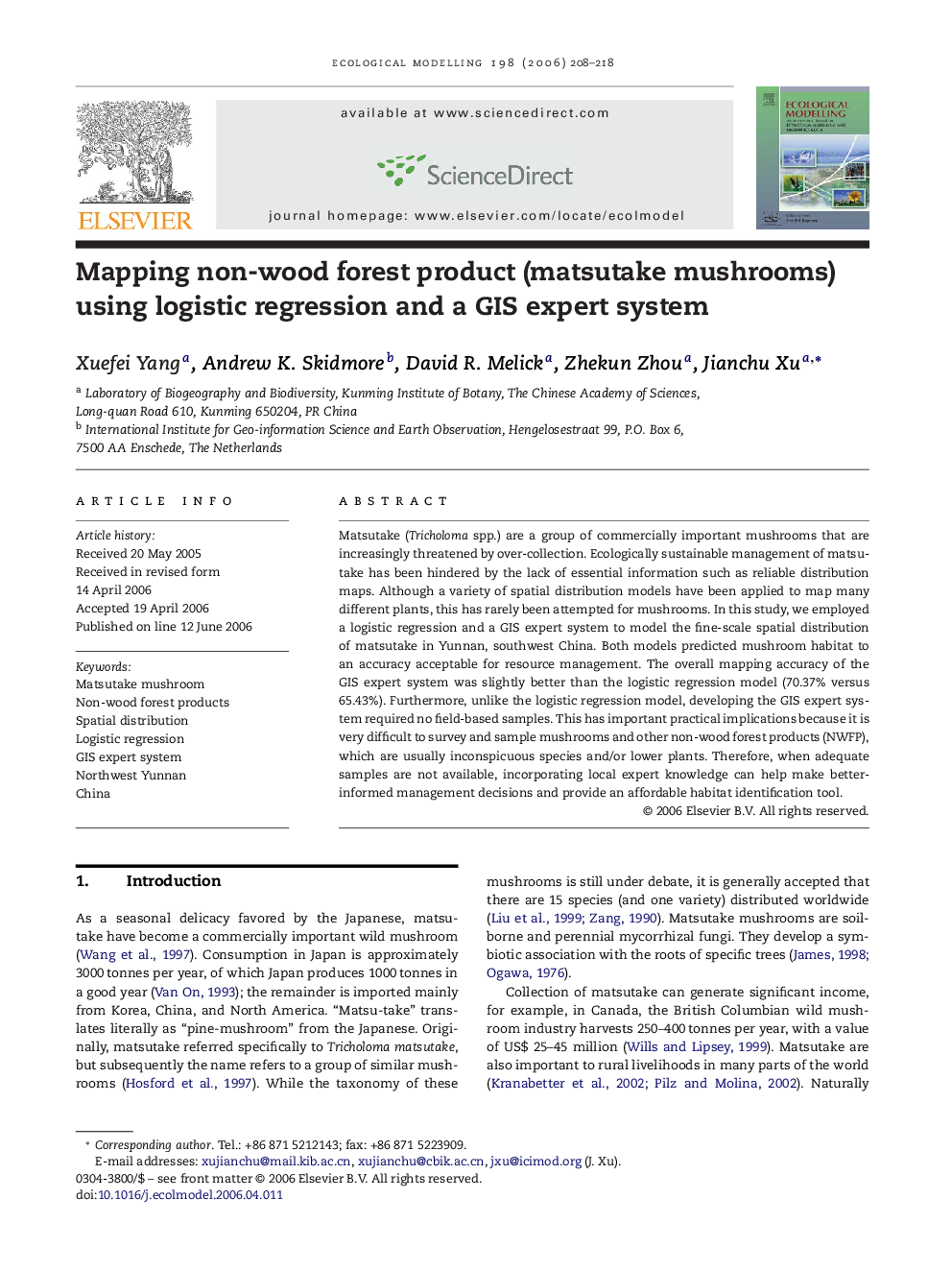| Article ID | Journal | Published Year | Pages | File Type |
|---|---|---|---|---|
| 4378848 | Ecological Modelling | 2006 | 11 Pages |
Matsutake (Tricholoma spp.) are a group of commercially important mushrooms that are increasingly threatened by over-collection. Ecologically sustainable management of matsutake has been hindered by the lack of essential information such as reliable distribution maps. Although a variety of spatial distribution models have been applied to map many different plants, this has rarely been attempted for mushrooms. In this study, we employed a logistic regression and a GIS expert system to model the fine-scale spatial distribution of matsutake in Yunnan, southwest China. Both models predicted mushroom habitat to an accuracy acceptable for resource management. The overall mapping accuracy of the GIS expert system was slightly better than the logistic regression model (70.37% versus 65.43%). Furthermore, unlike the logistic regression model, developing the GIS expert system required no field-based samples. This has important practical implications because it is very difficult to survey and sample mushrooms and other non-wood forest products (NWFP), which are usually inconspicuous species and/or lower plants. Therefore, when adequate samples are not available, incorporating local expert knowledge can help make better-informed management decisions and provide an affordable habitat identification tool.
